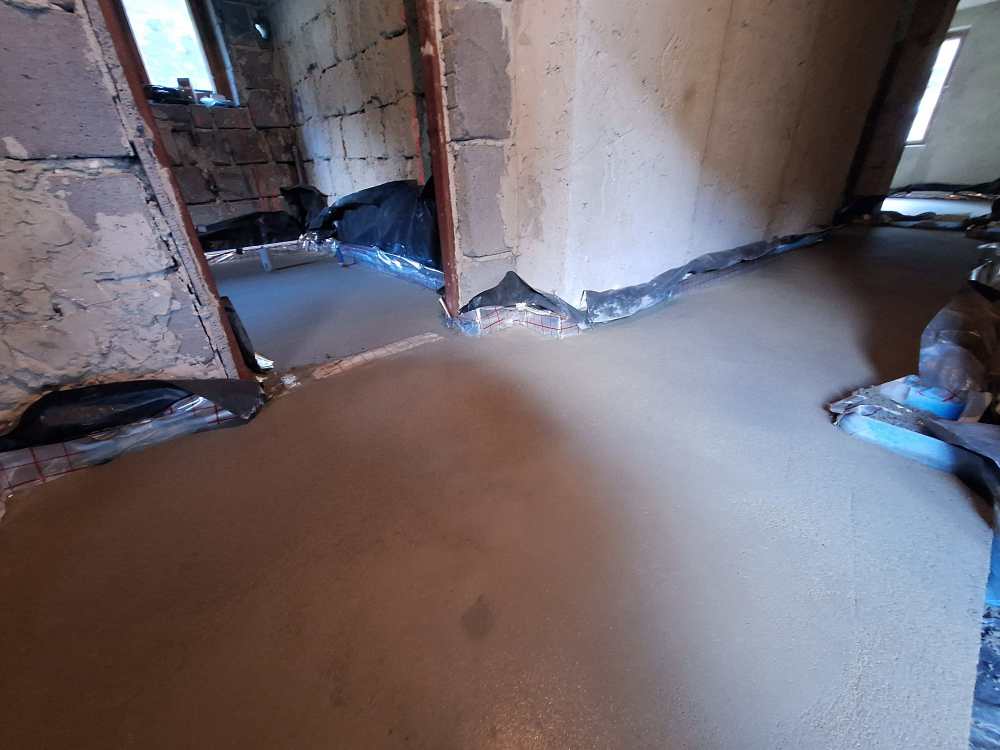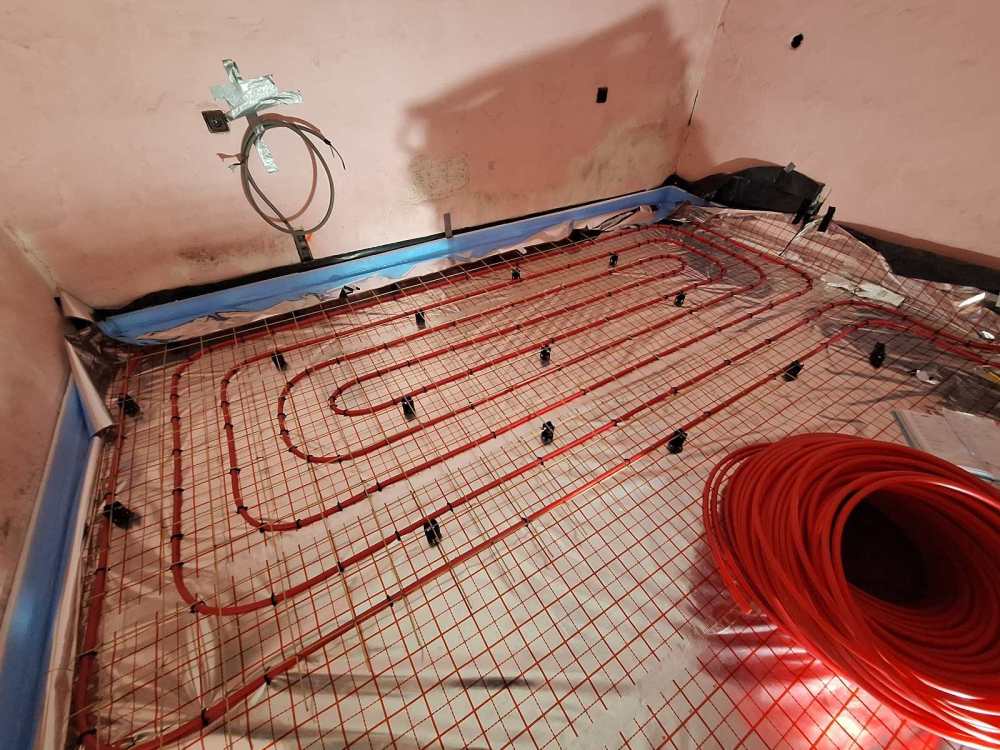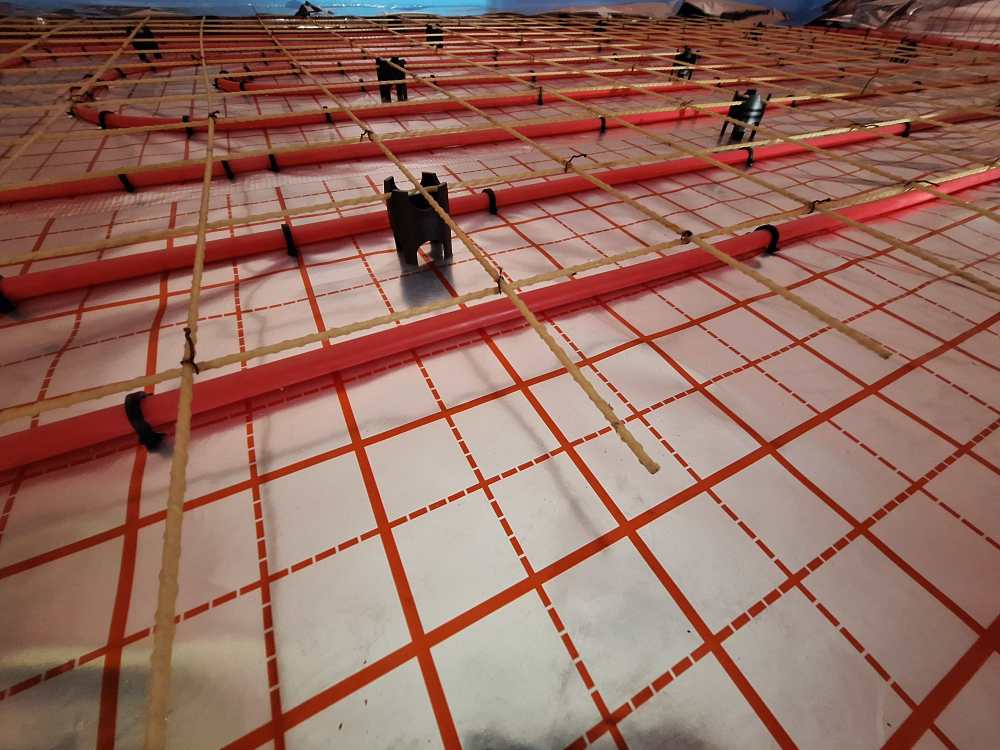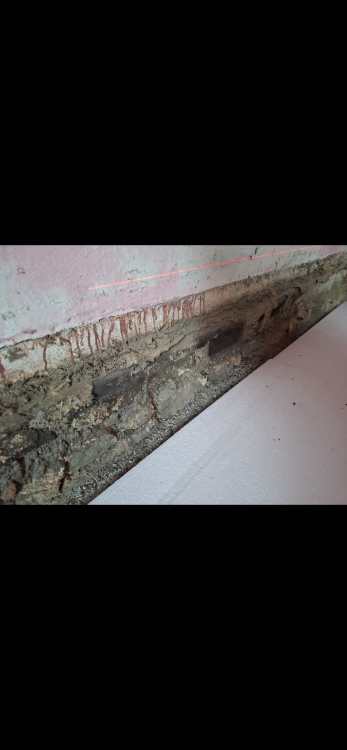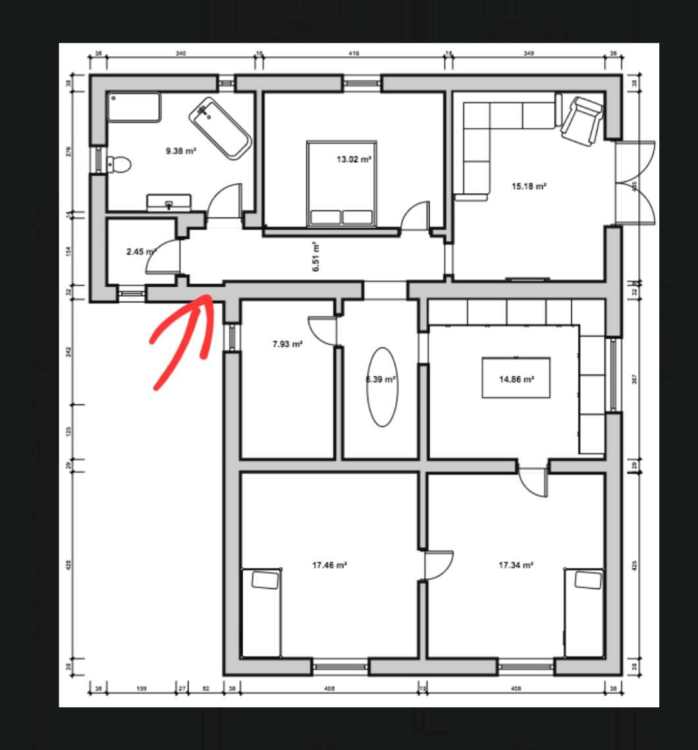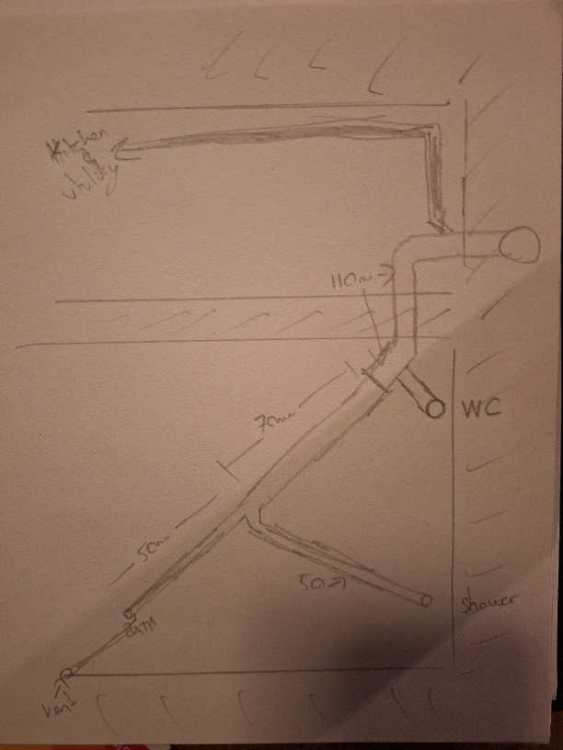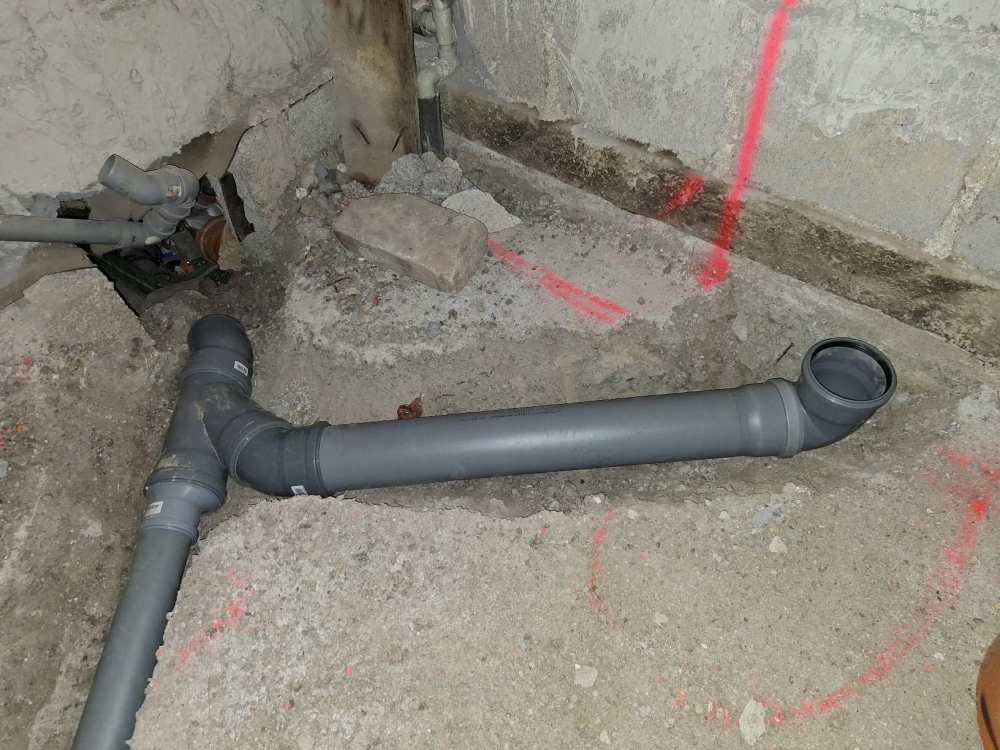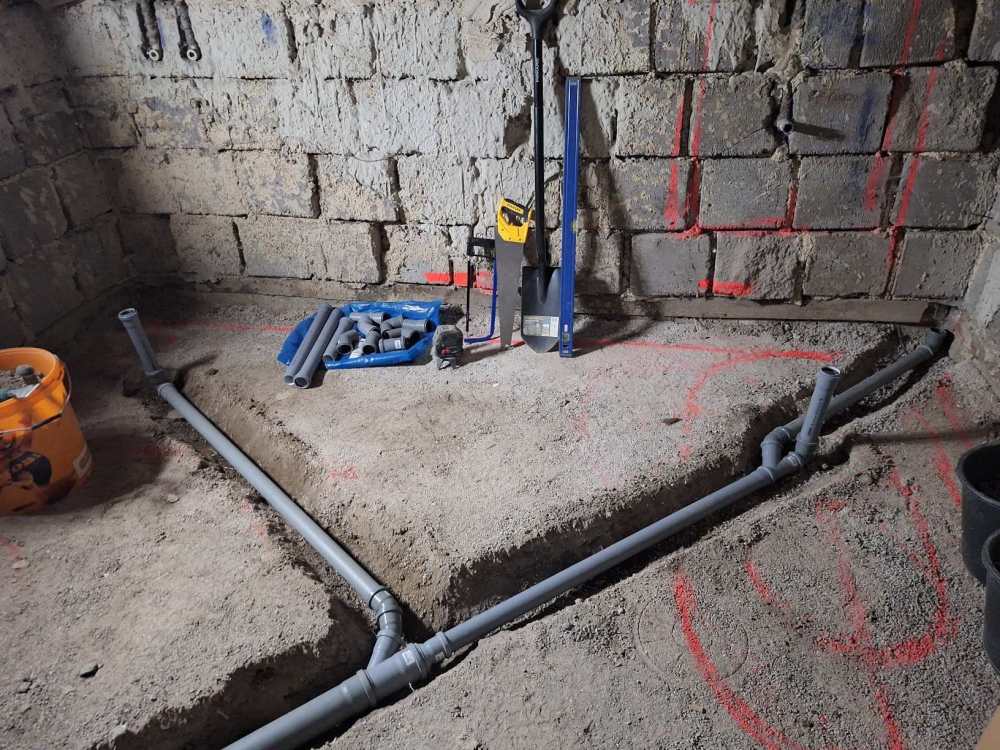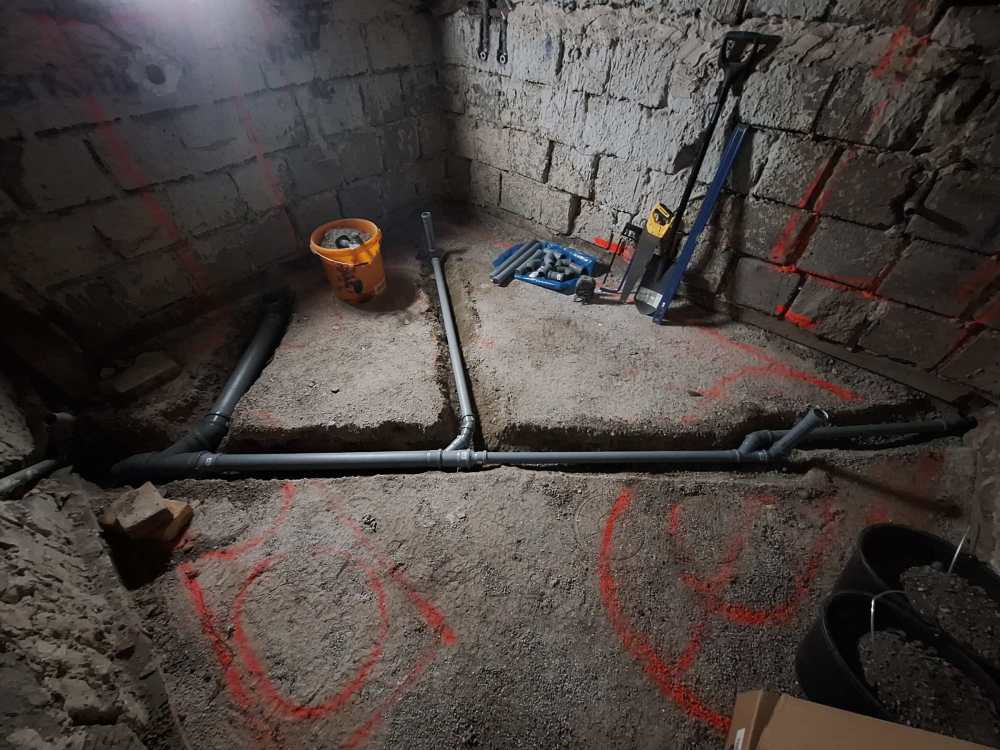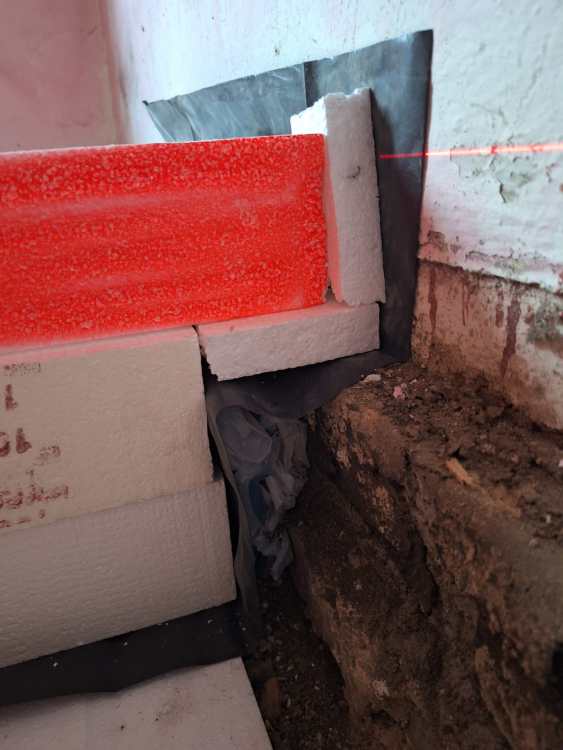
Coll659
Members-
Posts
45 -
Joined
-
Last visited
Everything posted by Coll659
-
It's done!! Just wanted to say a big thank you to everyone with the advice on this one. After the advice I changed plans and in the end got a sand cement screed laid by a professional company who did an amazing job and finish. Time to move on to the next stage (I'm sure I will gleaming you wisdom again) Thanks again, few pictures before
-
Thanks I'll add a load more staples. And yeah I plan to pressurise them all up to 4 bar (our mains water pressure) to check for leaks before and to monitor during laying
-
Things are progressing and we have some professionals lined up for the concrete (professionals doing a side job for a friend with me and our mutual friend helping). Quick question on the rebar chairs. I have one room almost ready but found the rebar might be an issue. It's 4mm composite on 50mm chairs. However the chairs I got will just pierce the foil and insulation if you step on or close to them. Stepping between is fine as the composite rebar is very flexible so just bends but this might be an issue when they are laying the concrete. It's not easy stuff to walk on. Do you think the rebar chairs with the wide circular buttons would fix the issue or does someone have any tricks for this. Also my concrete guy is quite worried about the the rebar floating but I think tie wrapping it to the chairs and then to the underfloor heating pipes will be fine? Floor build up is: Sand blind 30mm EPS Dpm Insulation (200mm EPS in part of the house, 100mm PIR in the rest) Under floor heating foil 100mm concrete (And round the edges 30mm EPS and foam expansion skirt between Dpm and underfloor heating foil)
-
We have a quote of approx 2700 EUR. That's 100mm concrete throughout the house (approx 110m2) with Labour. That's in central Slovakia.
-
After the advice of pretty much everyone, for once I am going to admit defeat and have some professionals in for this job. We have found a couple of options we are happy with and will readjust the budget a little to accommodate but its not something we can afford to go wrong. I will take some pictures and update you in a couple of weeks when it's done but thank you so for your advice and help and I now know what to watch for when it's poured and what to prepare
-
We are meeting with a professional concrete guy tomorrow so to discuss the job. With a bit of luck we can convince him to take the job on and do it for a reasonable price but we're not sure yet. But at least we will get more info and advice and perhaps some local contacts. A screed mix might be worth considering. Yeah I read through orangebooms experience so I'll definitely be vigilant about that! My underfloor heating will be stapled to the insulation which should hopefully avoid the issue of the pipes and I'll be vigilant about making sure the rebar stays down. Thanks again for everyone's advice, I'm certainly taking it all in and will let you know what we get after meeting with the professional tomorrow
-
Thank you so for the responses. Definetley confirming my thoughts on how difficult it will be. I'm working my way through all the points one by one so will likely be back back with me questions. We have a couple more semi experienced people on board and are in the process of trying to get a professional or two to come as well. And just planning everything to the tiniest detail. I've lost many hours sleep to this recently and really appreciate the advice. We have some phone calls to make next week and see what we can figure out
-
Good idea I'll consider that
-
Thanks all for the advice. Definitely agree that the best advice is to not do it in one pour. Unfortunately for to a variety of factors i love if need to do it in one go. My plan is to cut all the perimeter insulation to the perfect level, plus the insulation in the doorways to level from. Perhaps a laser set up as well.
-
100mm concrete I'm doing the following: Sand blind (only to level) 30mm EPA Dpm Insulation Underfloor heating foil Underfloor heating stapled to insulation and 4mm composite rebar on 50mm chairs 100mm concrete Though please note I'm a joiner and not a professional on this stuff so don't blindly follow me 😅
-
I agree with Mike. I'm in the process of building up my floor (same with insulation below the concrete slab) and in half the house I have only enough space for 100mm PIR and in the other half I more space so used a bigger build up of eps. Got better insulation values and saved a whole bunch of money. Plus building up with eps is much easier and less heavy work than hardcore
-
Thanks for the advice. Currently I have a few people who have no experience but are useful for lugging around hoses where we need them, then there's me and one or hopefully two more people who are not professional builders but pretty good with this stuff and some experience of building work. I will see if I can get someone with experience but not sure if that will be possible yet. I'm thinking to use 100mm eps in all the doorways, set to the level of my concrete and put outer conduit pipe for my underfloor heating pipes to pass through, and tape up the ends. This will then make each room completely separate with it's own slab. I can then just put my flooring straight over the EPS. The water table is pretty high but the foundations come up above the ground quite a lot so my dpc and floor layer is well above water table. But I am also in the process of digging a french drain as well. Looking at local rental shops and see they have the vibrating bull floats and wondering if it's worth hiring one or just using a normal one
-
Just to protect the DPM
-
From what I understood the underfloor heating foil does this job? But I will look more into this thanks. And yeah the walls have an old dpc (the hard tar like one, forgot the name of it right now?) it's old but doesn't seem to be letting any damp up through the walls and it has been empty and in heated for quite a few years. You can just about make it out in the picture below
-
Hopefully the last time I bother you all with my floor. Next week I will be pouring the concrete floor in the house in renovating and looking for advice and tips. It's an old house with stone foundations, I dug out the old rubble that the old wood floor was sat on until I got to compacted ground and now have the following: -sand blinding -30mm eps -Dpm -Insulation (200mm EPS in some places and 100mm PIR in others) -underfloor heating foil -underfloor heating pipes stapled to insulation -4mm composite rebar 150x150 on 50mm chairs -30mm EPS insulation around edges and an expansion foam skirt I'll be getting the concrete delivered with a pump truck and hoses in one go. The main entrance is marked with the red arrow in the picture before, I'll start in the back room and work my way towards the entrance. It's approx 110m2 in total. My questions are: How do I make joints between the rooms taking into account there will be underfloor heating pipes going through doorways. Should the slabs be completely separate for each room to avoid cracking and allow expansion? What advice and tips do you have to successfully pour it all. It will be the finish floor (just tiles and laminate going on top) so I need it smooth and level. I guess I need long straight pieces of wood or something for screeding. Should I make one for each room the full width of the room for screeding? but what do you normally use to screed from (like rails) Then a bull float and keep working back through the house to the entrance. And then I believe after it starts to dry a little you trowel it up? How long after pouring is this normally? Any advice or tips would be great.
-
Thanks for the tips, much appreciated
-
Thanks nick. So air gaps between the insulation and stone foundations are not an issue then?
-
Thanks nick I was hoping to get your feedback. Great to know it's looking good. I wasn't sure about the vent but wanted to be safe rather than sorry. I guess there's no harm leading it since I have it dug out already? And yeah I will bed it with sand and cement as you suggest then fill around the edges and top with what I dug out before putting the insulation down Thanks again
-
Hi all. Just put in the waste for my bathroom which will go below Dpm, insulation and concrete, before I fill in the trenches and put my insulation on top i wanted to check if what I've done is all good. Bath waste in 50mm (for free standing bath) in corner with 50mm vent coming off and going up the wall and outside. Joins midway with the shower waste from the other corner (also in 50mm) and then continues in 70mm to the third corner where the toilet joins it and it goes to 110mm. It then does a 45 turn to go through the wall where the plan will be to do a 90 turn and go through the wall to the soil stack (it joins with the 50mm waste from the kitchen and utility just before going through the wall) I have kept a 1:40 fall in all the pipes I'm hoping it's not too many bends for the toilet? Any fundamental mistakes I have made? And feedback would be greatly appreciated
-
Hi again. Renovating an old house and have followed the advice of people here on my other threads in regards to the floor but need some advice on how to deal with the insulation around the edges. It's an old house with stone foundations, 100mm concrete on top of the stone followed by an old doc and the solid walls. I have dug out all the old stuff until I got to solid ground and now building up as follows: Sand blinding 30mm eps Dpm 200mm insulation Underfloor heating foil Underfloor heating pipes and rebar 100mm concrete My question is how to deal with the edge insulation on the uneven stone foundations. Do I just build up the insulation, pull the dpm against the insolation and fill the area behind with either sand or expanding foam, then some 30mm eps on top and on the wall with the Dpm behind it. (photo below shows a mockup of my idea, the orange EPS represents the concrete and the area with the wrapper is where I would put sand or foam, the bin bag being the Dpm of course? ) Any advice would be greatly appreciated
-
Great info thanks for the reply, helps a lot. I think this is the direction I will go as well
-
@Onoff I'm looking to do very similar to you, couple of quick questions. Why the EPS? Just to protect the DPM more? I'll be clipping my underfloor heating pipes to the insulation without the polypipe tray and then thinking just to lay the A142 mesh on top. Did you mix the concrete yourself or have it delivered? I need to do approx 110m2 (across 8 rooms so it can be split into smaller sections) and due to access and cost (truck would have to block the road) I'm looking to getting in a bunch of friends and doing it all with a mixer but still looking for advice on the correct mixture. Just a simple 1:2:4?
-
Thanks I actually didn't know that but it's my plan to have everything in ducting but I'll make double sure to make sure they don't touch now
-
After much deliberation I decided to go with the option of pulling everything out and properly insulating. The house is of two parts, new and old, the old has the wooden beams simply sat in the expanded clay to support the floor boards. Below the expanded clay (approx 300mm) is just a rubble. Here I intend to: -dig out all the expanded clay, -compact the layer of rubble with a whacker plate -50mm sand leveled and compacted with whacker plate -dpm -300mm EPS insulation (there will also be house wiring and plumbing laid into this) -ufh foil and underfloor heating pipes stapled to insulation -100mm cement screed (probably done by hand with a mixer, looking for advice on this cement type and make up) - finished floor, mixture of vinyl and tiles In the new part we are in the process of ripping out the old slab and will be the same idea but since we won't have so much depth here we will do 100mm PIR insulation to keep floor levels equal. Looking for advice if this is ok. Do I need another layer of concrete at the bottom? Or a thicker concrete layer or reinforcement or something? I'm worried over time the concrete layer will settle and crack and possible damage and break the underfloor heating pipes so not sure if I need a stronger layer on the bottom or a top screed over the concrete or something. Any advice would be greatly appreciated Thanks in advance
-
yeah you may be correct there Mr punter. Il be confirming this tomorrow hopefully

